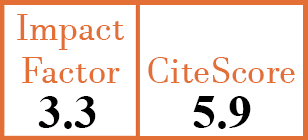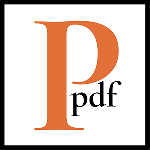Environmental Rheumatology
Infections preceding diagnosis associated with myositis phenotypes in a national patient registry
T. Ohnishi1, J. Wilkerson2, N. Bayat3, P.N. Farhadi4, A. Faiq5, C.F. Dillon6, A. Schiffenbauer7, C.G. Parks8, H.I. Brunner9, B. Goldberg10, F.W. Miller11, L.G. Rider12
- Environmental Autoimmunity Group, Clinical Research Branch, National Institute of Environmental Health Sciences, National Institutes of Health, Bethesda, MD, USA.
- DLH, LLC, Bethesda, MD, USA.
- Environmental Autoimmunity Group, Clinical Research Branch, National Institute of Environmental Health Sciences, National Institutes of Health, Bethesda, MD; and DLH, LLC, Bethesda, MD, USA.
- Environmental Autoimmunity Group, Clinical Research Branch, National Institute of Environmental Health Sciences, National Institutes of Health, Bethesda, MD, USA.
- Environmental Autoimmunity Group, Clinical Research Branch, National Institute of Environmental Health Sciences, National Institutes of Health, Bethesda, MD, USA.
- Environmental Autoimmunity Group, Clinical Research Branch, National Institute of Environmental Health Sciences, National Institutes of Health, Bethesda, MD, USA.
- Environmental Autoimmunity Group, Clinical Research Branch, National Institute of Environmental Health Sciences, National Institutes of Health, Bethesda, MD, USA.
- Chronic Disease Epidemiology Group, Epidemiology Branch, National Institute of Environmental Health Sciences, National Institutes of Health, Durham, NC, USA.
- Division of Rheumatology, Cincinnati Children’s Hospital Medical Center, Cincinnati, OH, USA.
- The Myositis Association, Columbia, MD, USA.
- Environmental Autoimmunity Group, Clinical Research Branch, National Institute of Environmental Health Sciences, National Institutes of Health, Bethesda, MD, USA.
- Environmental Autoimmunity Group, Clinical Research Branch, National Institute of Environmental Health Sciences, National Institutes of Health, Bethesda, MD, USA. riderl@mail.nih.gov
CER18703
2025 Vol.43, N°7
PI 1204, PF 1212
Environmental Rheumatology
Free to view
(click on article PDF icon to read the article)
PMID: 40556618 [PubMed]
Received: 10/03/2025
Accepted : 06/06/2025
In Press: 20/06/2025
Published: 09/07/2025
Abstract
OBJECTIVES:
We investigated the association of antecedent infections with clinical subgroups and phenotypes in the idiopathic inflammatory myopathies (IIMs).
METHODS:
Adult IIM patients (362 with dermatomyositis (DM), 250 with polymyositis (PM), and 256 with inclusion body myositis (IBM)) enrolled in a national myositis patient registry. One hundred thirty-four patients had symptoms of lung disease plus fever and/or arthritis (LD+), and 103 with systemic autoimmune rheumatic disease-associated overlap myositis (OM). Self-reported infections and antibiotic usage within 12 months prior to IIM diagnosis were examined. Adjusted odds ratios (ORs) and 95% confidence intervals (CIs) were calculated across IIMs. LD+ and OM analyses were performed excluding IBM patients.
RESULTS:
Infections before IIM diagnosis were more frequent in DM and PM than IBM. Febrile illness and gastroenteritis were more frequent in DM than IBM (OR 2.82 and 3.30, respectively), and in PM than IBM (OR 3.27 and 3.26, respectively). Patients with LD+ and OM had higher odds of reported infections than those without these phenotypes, with pneumonia the most strongly associated infection (OR 5.26 95% CI 2.59-10.71 in LD+, OR 2.75, 95% CI 1.25-6.06 in OM). Antibiotic usage within 1 year before diagnosis did not differ among DM, PM and IBM patients, nor in OM. Antibiotics were used more frequently used in patients with LD+ compared to no LD, but this was attenuated after adjusting for infections.
CONCLUSIONS:
Antecedent infections, particularly respiratory and gastrointestinal infections may contribute to adult IIM phenotypes. Pneumonia showed the strongest association with myositis phenotypes accompanied by frequent lung disease.



